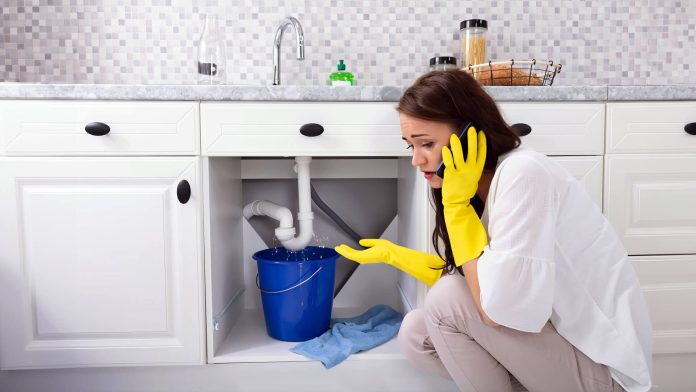As a strata manager, one of the most common issues you’ll need to deal with is plumbing problems. From leaks and bursts to blockages and drainage issues, plumbing can be a significant headache for strata properties. Having a good understanding of common strata plumbing problems and how to navigate repairs will make you better equipped to manage issues quickly and effectively.
Identifying Plumbing Issues
The first step is being able to identify potential plumbing problems before they become more significant issues. Here are some of the most common signs of plumbing problems in strata properties:
Leaks
Leaking pipes, faucets, and fittings are usually identifiable through visible water damage, drips, or damp areas. Pay attention to any musty odours, peeling paint or drywall, or bubbling flooring, as these can indicate unidentified leaks. Listen for running water that shouldn’t be on.
Blocked Drains
Blocked drains will be evident through slow-draining water, gurgling sounds, bad smells, or water pooling around drains. Baths, sinks, and toilets may drain slowly or not at all if there is a blockage. Buildups of hair, grease, and other debris often cause this.
Burst Pipes
Burst pipes can be trickier to identify but usually result in significant water coming through ceilings or walls. There may be a loud bang from the burst. Flooding, stains on walls or ceilings, and water dripping through light fixtures can all be signs of a burst somewhere in the system.
Faulty Fixtures
Dripping, running, or leaking taps, showerheads, and toilet cisterns indicate worn fixtures that need repair or replacement. Noisy pipes that clank or bang when hot water runs likely have issues that need addressing.
Assessing and Diagnosing Problems
Once a potential plumbing problem has been identified, proper assessment and diagnosis is crucial. Here are some things to keep in mind:
- Inspect all fixtures and pipes affected by the issue. Flush toilets, run taps and run the shower to check for problems.
- For leaks or damp areas, use moisture meters and thermal imaging cameras, if possible, to identify the exact location of the leak.
- For blocked drains, you may need to use drain cameras or hydrojetting if simple plunging does not clear the clog.
- Check the water pressure at various points. Low pressure may indicate blockages or issues with water supply lines.
- Consult the property’s maintenance records. Look for any previous plumbing issues in the exact location.
- Assess the age and material of pipes. Old galvanised steel pipes are more prone to bursting.
- Consider getting professional drainage surveys or pipe inspections if the source of the problem needs to be clarified. These can identify any underlying issues.
Deciding on Repairs vs. Replacement
Once the specific plumbing issue has been identified, you must decide whether repairs or total replacement are required.
Factors Favoring Repair
- The problem is localised, like a single leaking pipe joint or faulty faucet.
- Pipes are generally in good condition without substantial corrosion or wear.
- The piping layout doesn’t need modification or re-design.
- Budget or building schedules preclude major replacement projects.
Factors Favoring Replacement
- There are systemic issues with leakage, water pressure, or drainage in the building.
- Pipes are old, corroded, galvanised steel. These are prone to ongoing leakage.
- Asbestos cement pipes require replacement for health reasons.
- The plumbing layout needs to be updated and needs updating.
- Major renovations are planned that require ripping out old plumbing.
Navigating Repairs
For minor repairs, follow these best practices:
Get Quotes
- Get a few quotes from licensed plumbers to find competitive rates for repairs.
Inform Residents
- Notify residents before any work, especially if the water will be shut off.
Isolate Issues
- Isolate any leaking or damaged pipes by shutting off water supply lines.
Make Temporary Fixes
- Make temporary repairs to stop leaks and water damage until permanent fixes can be made.
Repair Promptly
- Complete and test repairs promptly to prevent ongoing issues.
Managing Replacement Projects
For significant plumbing replacements:
Consult Professionals
- Have plumbers assess the scope of work and provide recommendations.
Create a Plan
- Make a project plan for the work involved – staging, timelines, and costs.
Get Competitive Bids
- Get quotes from at least three reputable plumbing contractors.
Inform Residents
- Advise residents of project details, including timeframes and service disruptions.
Arrange Logistics
- Have temporary water supply and facilities as needed.
Verify Work
- Inspect new plumbing for code compliance and test thoroughly.
Preventing Problems
To help avoid plumbing headaches in your strata development:
Maintain Plumbing
- Arrange regular inspections, maintenance, and repairs of all plumbing.
Update Fixtures
- Replace outdated or leaking fixtures with water-efficient models.
Clean Pipes
- Have large drain lines professionally cleaned every 1-2 years.
Educate Residents
- Inform residents on ways to prevent blockages and identify leaks early.
Discourage DIY
- Advise residents to contact strata for plumbing issues rather than trying DIY fixes.
By staying vigilant, responding promptly, contracting qualified professionals, and investing in preventative maintenance, you can tackle strata plumbing issues decisively and limit disruptions for your strata residents. Knowledge of common strata plumbing problems, repair techniques, and replacement best practices gives you the tools to manage any plumbing challenges skillfully.
www.llanelliherald.com
https://www.llanelliherald.com/8955/managing-the-flow-navigating-strata-plumbing-needs/














